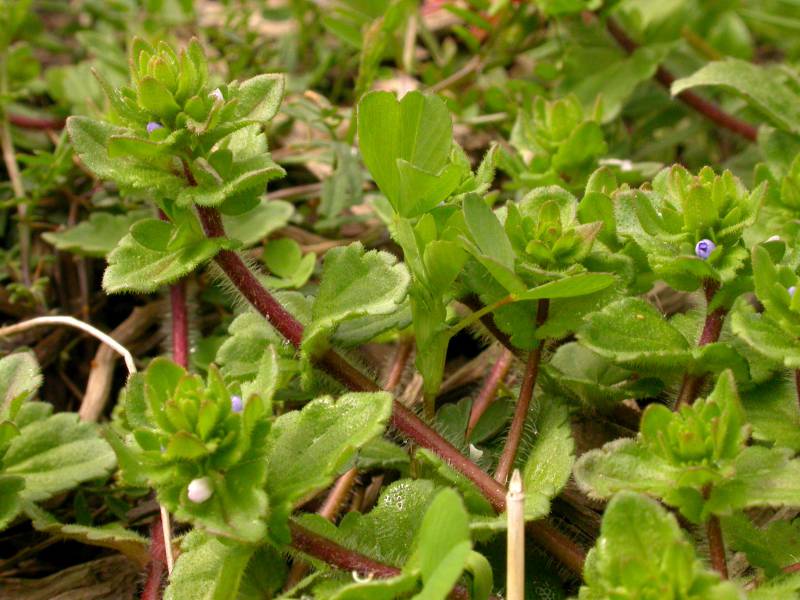Veronica beccabunga
Veronica arvensis
corn speedwell, wall speedwell
Leaves opposite, ovate to broadly elliptic, 1.5-2.5 cm. long and half as wide to nearly as wide as long, with rounded serrations, the lower short-petiolate, the upper sessile.
Inflorescence a terminal, bracteate, condensed or elongate, spike-like raceme;
bracts alternate, narrower than the leaves, each subtending a single flower;
calyx of 4 sepals;
corolla blue-violet, 2-2.5 mm. wide, rotate, 4-lobed, the upper lobe the largest;
pedicels 1-2 mm. long;
style 0.4-1 mm. long;
stamens 2.
Capsule 3 mm. high, obcordate.
Veronica beccabunga
Veronica arvensis
Occurring on both sides of the Cascades crest in Washington; widely distributed throughout much of North America.
- Local floras:
BC,
CA,
OR,
WA
- Local Web sites:
CalFlora,
CalPhotos,
Flora NW,
PNW Herbaria
WildflowerSearch
iNaturalist (observations)
USDA Plants Database
- LBJ Wildflower Center
- SEINet
- Plants of the World Online
- Encyclopedia of Life
- Wikipedia
- Google Image Search


